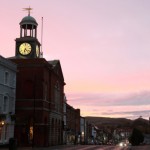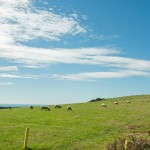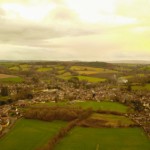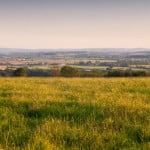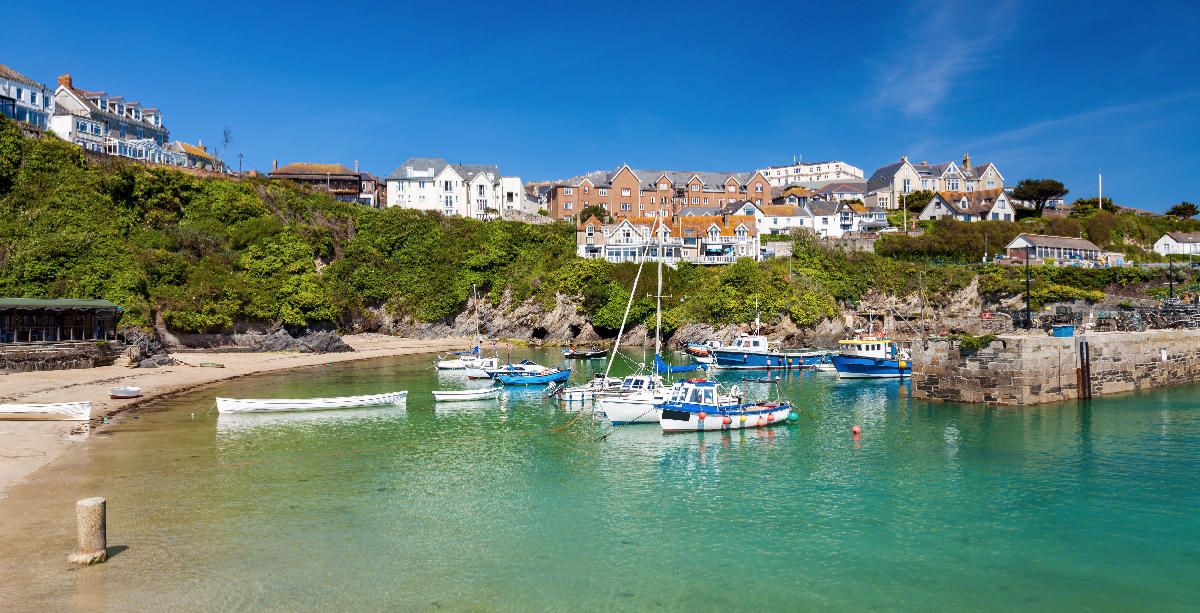
Newquay is a seaside resort and fishing port, situated on the north coast of Cornwall in the south-west of England. The town lies approximately 12 miles (19 km) north of Truro and 50 miles (86 km) west of Plymouth. Newquay is bounded to the south by the River Gannel and to the north-east by the Porth Valley. The town is widely renowned as the surf capital of the UK and, more recently, as a regional centre for the aerospace industry. At the last UK Census in 2011, the population of Newquay was recorded as 20,342.
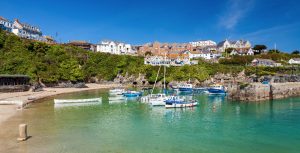
Image: ian woolcock/ Shutterstock.com
A Fleeting History of Newquay
The first signs of settlement in the Newquay area consist of a late Iron Age hill fort which exploited the nearby iron ore deposits and benefitted from the natural defences provided by Trevelgue Head. It is thought that the site was occupied continuously between the 3rd century BC and the 6th century AD.
Newquay’s natural harbour provided protection from bad weather and it’s known a small fishing village grew up in the area. It’s not recorded when the village first came into being, but it is not mentioned in the Domesday Book. A fishing village of Newquay was originally known as Towan Blistra, with Towan meaning ‘sand dune’ in Old Cornish but the denotation of Blistra is unclear. By the 15th century, there was a quay of sorts built at the site of Newquay’s current harbour. It was used to import coal and export mined ore from the tin and copper industries. A ‘new quay’ from which the town derives its name was built sometime during the early 17th century. In 1801, the year of first national British census, approximately 1,300 inhabitants were recorded in the settlement of St Columb Minor parish, of which Newquay formed part. In 1832, the construction of the current harbour began.
The Train Arrives
In 1849, a railway line was built along the Lappa Valley to carry ore from the mine at East Wheal Rose to Newquay Harbour. In 1876, the national rail network was extended to Newquay, with the station being built just east of the town centre and close to the beach. The passenger carrying line, which was built by the Great Western Railway, swallowed up the old Lappa Valley line. The advent of mass tourism to the town, brought by the railway, proved to be a catalyst for the rapid growth of the village around the port of Newquay. Several new large hotels were built towards the end of the century. However, other new hotels, which were converted from the former holiday homes of the well-to-do, particularly along Narrowcliffe, also began to appear. Paradoxically, just as tourism was beginning to boom, the age-old industry of pilchard fishing and processing, which had been important to the town for many years, was in rapid decline as the fish had all but disappeared by the start of the 20th century.
There is still a ‘Huer’s hut’, basically a vantage point, situated high above the harbour, where the ‘huer’ would lookout from for pilchards, crying out ‘’hevva, hevva!’’, whenever a shoal of the fish was sighted. Today there is a small fleet of boats that still manage to make a living from fishing, catching mainly crabs and lobsters.
The Modern Era
By the 1930s, guesthouse and bed & breakfast style accommodation had become popular since they were cheaper and less formal than traditional hotels. Newquay became so popular it opened one of the first Tourist Information Centres in the UK. Post-war, the town continued to grow, adding ever more hotels, guesthouses, self-catering apartments and holiday parks to its supply of tourist accommodation. In the 1960s, the new leisure sport of surfing found its way from California to the local beaches and a new industry was born. With its ideal waves and holiday atmosphere, it wasn’t long before Newquay’s Fistral and Watergate beaches were established on the world surfing circuit.
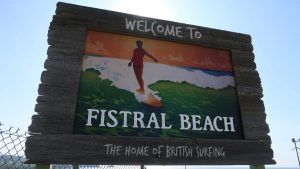
With tourism firmly established the advent of cheaper commercial air travel in the 1970s onwards gave UK holidaymakers the option to travel abroad but equally gave overseas visitors the chance to visit the UK and with that Newquay became a popular international holiday destination. Now Newquay is a vibrant holiday destination for all ages with visitors from across the globe. With its sandy beaches, glorious seas and plenty to see and do you can do as little or as much as you like.
Getting Here
Getting to Newquay is fairly easy and there are the usual transport options available.
By Air
Newquay has its own airport on the outskirts of the town. There are currently(2019) 9 airlines that fly to and from the airport making it an easy way to get here.
By Bus
There are numerous connections to/from London, Birmingham, Bristol and many places nationwide available with National Express. Megabus offer services to Newquay from London and Plymouth.
By Car
If you are driving down to Cornwall, Newquay is only 15 minutes off the A30, and well signposted. The town makes a great base for exploring Cornwall by car.
By Rail
During the summer months, there are trains direct from just about every major location in the UK, such as London, Bristol, Birmingham, Yorkshire, the North East and Scotland. Throughout July and August, there is a daily train which runs directly between Newquay and London.
Did you know?
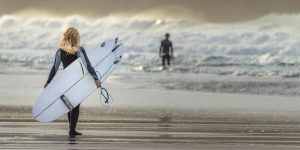
Image: Mick Blakey/Shutterstock.com
- Newquay is considered the surf capital of the UK
- William Golding, the author of the world-renowned book, ‘Lord of the Flies’, was born here
- Part of the Beatles’ psychedelic TV caper ‘The Magical Mystery Tour’ was filmed in here
- There are an incredible 15 beaches in or within a few minutes drive
Things to see and do in Newquay!
There is always plenty going on in Newquay especially during the summer months. It’s a great venue for young, old, those in between, and families. With attractive surrounding countryside, there are lots of places to walk, including coastal footpaths. There are several stately homes worth a visit, and various theme parks and leisure activities for those with young families. A few of the many things to do around the town are;
- Newquay Zoo – set in beautiful, sub-tropical gardens, has over 1,000 of some of the world’s rarest and most endangered animals
- Blue Reef Aquarium – situated on Towan Beach, it has over 40 displays, ranging from local to more exotic sealife
- Fistral Beach – a surfer’s paradise, with some of the best waves in the country
- Stay Active Adventures – has lots of fun, outdoor, alternative activities for all the family
- Lappa Valley Steam Railway – miniature steam engine ride through the beautiful, Cornish countryside, with an adventure park at the end of the line
- Dairyland Farm World – indoor and outdoor sites with all the farming features and experiences you’d expect
- Healeys Cornish Cyder Farm – guided tour of a working farm, complete with tractor rides and hands-on with the animals, not forgetting the cider production
- Carnewas at Bedruthen – an extensive and picturesque sandy beach for walkers and sunbathers
- Screech Owl Sanctuary – a centre for rehabilitation and conservation of owls, with falconry and pet farm animals
Places to stay in Newquay?
You can take your pick from a wide range of accommodation options in Newquay. There are prices to suit every pocket when you can choose from a variety of hotels, B & Bs, Guesthouses, self-catering accommodation, holiday parks or campsites. For two adults sharing (or as indicated), a broad estimate of prices for the various types of ready accommodation are:
Campsites: £20 – £30 pppn
B & B/Guesthouses: £60 – £80
Standard Hotels/Inns £80 – £100
3/4/5 Star Hotels £100 – £200
Take the quiz and test your Newquay knowledge
